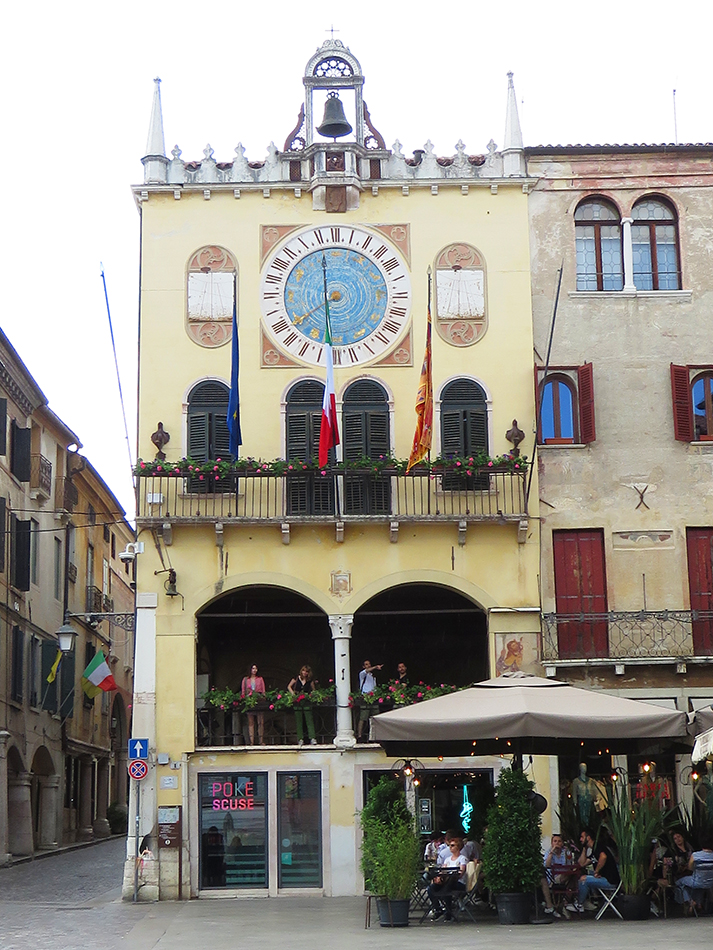
Although time and its measurement is a fundamental component of human life, a special type of clock which takes matters to the next level is the so-called
astronomical clock and whose purpose is not to measure time per se but to convey astronomical information and, in particular, the relative position of the
Sun and Moon as well as the zodiacal constellations and, in some cases, the position of the planets all as a function of time.
The oldest such effort to effectively emulate the overhead celestial sphere (ie a mini-planetarium) is the
Antikythera Mechanism which was discovered in 1901 totally by
accident by sponge divers off the coast of the Greek island of Antikythera. It has been dated to approximately 80 BC and it is believed to be the work of
Poseidonius of Rhodes. The Antikythera Mechanism is currently on display
at the National Archaeological Museum in Athens, Greece.
Note: The town of Brassano del Grappa with a population of approximately 75,000 people has a history which dates back to the
1400's. Construction of the town hall (Palazzo del Municipio) started in 1405 with the astronomical clock added in 1430 by Mastro Corrado da Feltre whereas
the present-day clock would be redesigned during 1742-1747 by the well-known watchmaker and engineer Bartolomeo Ferracina (1692-1777) who was also involved
in the reconstruction and modification of many other clocks of the time including the one in
San Marco, Venice.
The astronomical clock at Bassano del Grappa is similar to the clock at
Mantova
in that two sets of roman numerals ranging from I to XII are used to differentiate the daytime and nightime hours and which form the outermost ring of the
former clock. Furthermore, the ring includes hash marks for mid-hour as well as small demarcations for quarter-hour. The remaining (inner) portion of the ring
is cast against a blue background and includes a gold-plated ring with the twelve signs of the zodiac and followed by various concentric circles presumably
representing the known plamets of the time. A single dial is used to indicate the time of day using the proper half of the ring numbered from I to XII.
Of interest are the two sundials on either side of the clock and which would indicate that corrections to solar time are made with respect to local noon.
Note: For a view of the astronomical clock using greater focal length, please click
here and
here.
Note: For additional results involving astronomical clocks from around the world, please click
here.
|
Body: Sun Mass: 332,900 x Earth Mass Eq Diameter: 109.1 x Earth Distance: 149 million km RA / Dec: 23h 41m 41s / +89° 19' 51" Diameter: 32.16' Magnitude: -26.8 |
 |
Date: June 11, 2023 Location: Piazza Liberta, Bassano del Grappa, Italy Equipment: Canon PowerShot SX60 HS @ 5.32 mm / f4.0 Exposure: 1 x 1/200 sec ISO 100 RAW Image Format 4768x3516 Image Size Continuous Servo Mode Manual Mode Software: Photoshop CS6 Processing: Brightness/Contrast Resampling JPG Compression |